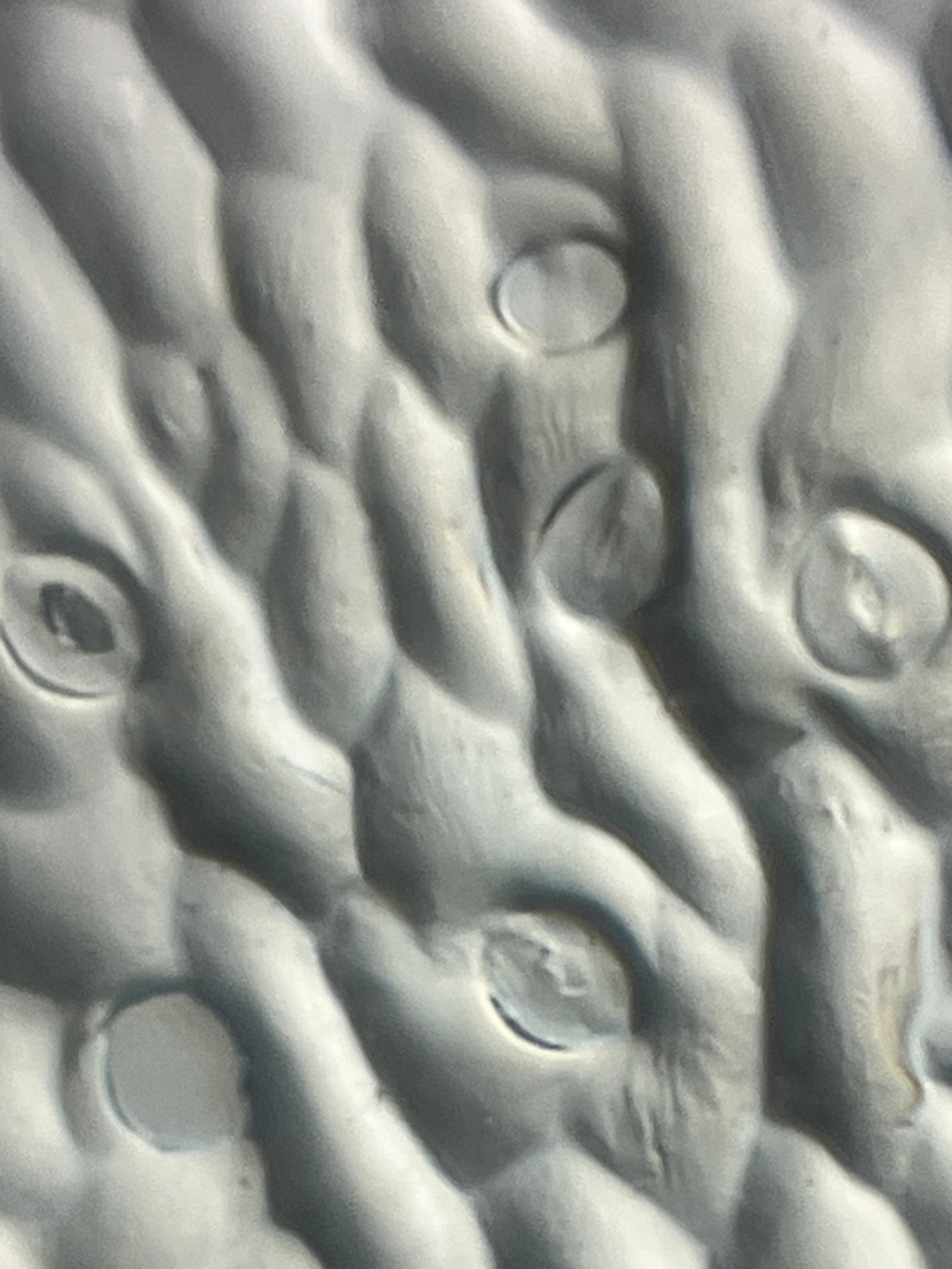The other day I found a centipede on the ground (it was already dead). Of course I did what anyone with their own pocket sized microscopy lab would do - I dissected it and put it under my Foldscope! What amazing things did I discover? Read on to see how beautiful and amazing the microscopic view of a centipede can be!

Centipede Legs
An interesting fact I learned while researching centipedes is that while the word “centipede” can be broken down to mean “100 feet'', centipedes can’t ever have 100 feet! This is because they always have an odd number of body segments - meaning they can have 98 legs or 102 legs, but never 100 legs! The one I found pictured below did not have nearly that many, but it still seemed like a lot of legs to me!
I was also surprised to see that the markings on the exoskeleton and legs of the centipede that I thought were black were actually blue! The color really jumped out at me under the Foldscope - especially when viewed using the dark field microscopy technique. To try dark field viewing with your Foldscope, shift the LED light to the side so the light hits your sample at an angle.

Centipedes Are Carnivores
Centipedes have two long antennae on the tops of their heads that are used for hunting prey. To catch their prey, centipedes use one set of smaller mouth parts to hold the prey while another larger set, called the forcipules, inject venom into their soon to be meal.
The antennae have a solid dark appearance on the macroscopic scale. Imagine my surprise when I saw a series of translucent golden stripes! Upon viewing the extra set of spikes on the smaller mouth parts and the sharpness of the forcipules, I immediately developed a greater appreciation for the centipede’s status as predatory hunters.

Centipede Eyes
Centipede eyesight is very complicated. Some centipedes have compound eyes, some have simple eyes, and some have no eyes at all! The centipede that I found had compound eyes made up of a group of simple eyes, or ocelli.
The images below show the eye being illuminated by both bright field and dark field lighting conditions. It is always astounding how the color of an object can change so much due to the refraction of the light.

Centipede Exoskeleton
Centipedes have an exoskeleton, but one thing that they lack is a waxy coating on the exoskeleton that will keep them from drying out. This is why centipedes like to hide in dark moist areas.
The microscopic view of the exoskeleton was one of the most beautiful things I have photographed with my Foldscope. I saw swirls of blue and yellow, which evoked a sense of a smooth, slick texture. How ironic considering that the exoskeleton is actually dry and not oily!

I have to admit that when I first saw the centipede on the ground, I did not think of something that was beautiful. But by the end of this exploration, I am happy to say that I have changed my tune! This exercise has inspired me to take a closer look at everything around me with a more open mind. I hope that you too will look for the microscopic beauty that exists everywhere in the world around us.

What did these images make you think of? Use your Foldscope to dive into the microscopic world and find the beauty that is there waiting for you. Share your microscopic images and thoughts on the Microcosmos. Be sure to tag us on social media when you post the results of your explorations, creations, and discoveries! We love to see how Foldscopers around the world are using their Foldscopes in new and innovative ways!
Facebook: @Foldscope
Twitter: @TeamFoldscope
Instagram: @teamfoldscope
Sources:
https://a-z-animals.com/blog/incredible-centipede-facts/


